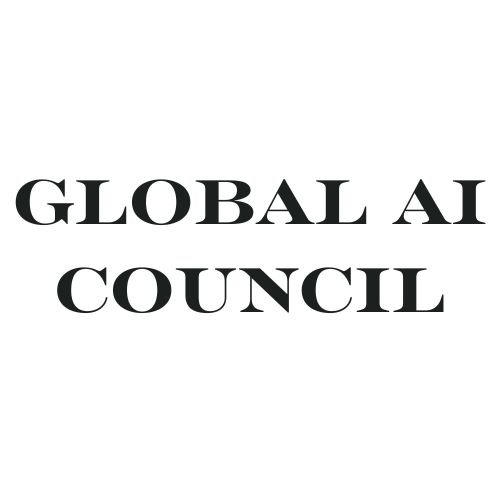From Turing's Vision to Neural Networks: The In-Depth Journey Through the History of Artificial Intelligence
Introduction: The Genesis of Artificial Intelligence
The inception of artificial intelligence (AI) traces back to the visionary ideas of Alan Turing in the mid-20th century. Turing, a pioneering mathematician and computer scientist, laid the theoretical groundwork with his concept of a universal machine capable of emulating any human intelligence task. Little did he know that his ideas would spark a revolution, giving birth to a field that would redefine the possibilities of human-machine collaboration.
The Dartmouth Conference (1956): A Milestone Moment
The term "artificial intelligence" was coined at the historic Dartmouth Conference in 1956. Organized by John McCarthy, Marvin Minsky, Nathaniel Rochester, and Claude Shannon, this conference marked the formal birth of AI as a distinct field of study. The attendees, including luminaries like Herbert Simon and Allen Newell, set out with the ambitious goal of creating machines that could mimic human intelligence.
Early AI: Symbolic Logic and Expert Systems
In the following decades, AI researchers explored symbolic logic and rule-based systems to model human reasoning. Programs like the Logic Theorist and the General Problem Solver showcased early successes. However, limitations emerged as these systems struggled with handling the complexity and ambiguity inherent in real-world scenarios.
The AI Winter: Challenges and Setbacks (1970s-1980s)
The 1970s and 1980s witnessed a period known as the "AI winter." High expectations collided with technological constraints, leading to a decline in funding and interest. Symbolic AI faced challenges in dealing with uncertainty and lacked the learning capacities essential for adapting to diverse situations. Despite setbacks, pioneering work continued in areas like knowledge representation and rule-based systems.
Revival through Machine Learning: The Rise of Neural Networks
The late 1980s and 1990s witnessed a revival fueled by advancements in machine learning, particularly neural networks. Researchers like Geoffrey Hinton, Yann LeCun, and Yoshua Bengio laid the groundwork for deep learning, enabling machines to learn hierarchical representations from data. Neural networks, once dismissed during the AI winter, emerged as a powerful paradigm, leading to breakthroughs in speech recognition, image classification, and natural language processing.
The Internet Age: Data, Connectivity, and AI (2000s-2010s)
With the dawn of the internet age, AI found new life. The abundance of data and increased computational power became catalysts for progress. Companies like Google, Facebook, and Amazon invested heavily in AI research, leveraging data-driven approaches to enhance search algorithms, recommendation systems, and virtual assistants. The emergence of big data and cloud computing paved the way for AI to scale and tackle more complex problems.
Deep Learning Dominance: ImageNet and AlphaGo (2010s)
The breakthrough moment for deep learning came in 2012 when a neural network won the ImageNet competition, surpassing human-level performance in image classification. Subsequent years witnessed AI achieving milestones previously thought unattainable, such as AlphaGo defeating human champions in the ancient game of Go. Deep learning became the cornerstone of AI applications, from autonomous vehicles to healthcare diagnostics.
Ethical Considerations and Bias in AI (2010s-Present)
As AI applications proliferated, so did concerns about ethics and bias. Issues related to the responsible use of AI, algorithmic fairness, and transparency came to the forefront. Researchers and practitioners grappled with mitigating biases in training data, ensuring the ethical deployment of AI systems, and navigating the societal impact of increasingly autonomous technologies.
The Current Landscape: AI in Everyday Life
In the present day, AI is an integral part of our daily lives. Virtual assistants, recommendation systems, and predictive algorithms shape our online experiences. AI-driven technologies power smart homes, optimize supply chains, and contribute to medical breakthroughs. The field continues to evolve, exploring areas like explainable AI, reinforcement learning, and the intersection of AI with other emerging technologies like quantum computing.
Future Frontiers: Quantum AI and Beyond
Looking ahead, the future of AI holds exciting possibilities. Quantum computing, with its potential to revolutionize computational power, presents new frontiers for AI research. Explainable AI and ethical considerations will continue to be at the forefront, ensuring that AI technologies align with human values and societal norms. As AI permeates new domains, from climate modeling to personalized medicine, the journey initiated by Turing's vision enters a phase of unprecedented exploration and impact.
Conclusion: A Tapestry of Progress and Promise
The history of artificial intelligence is a tapestry woven with threads of ambition, challenge, and triumph. From Turing's theoretical musings to the transformative power of neural networks, each era has contributed to the evolution of AI. As we stand at the threshold of quantum AI and ethical frontiers, the journey continues—a journey that transcends technological paradigms and resonates with the timeless quest to understand and replicate the intricacies of human intelligence.
